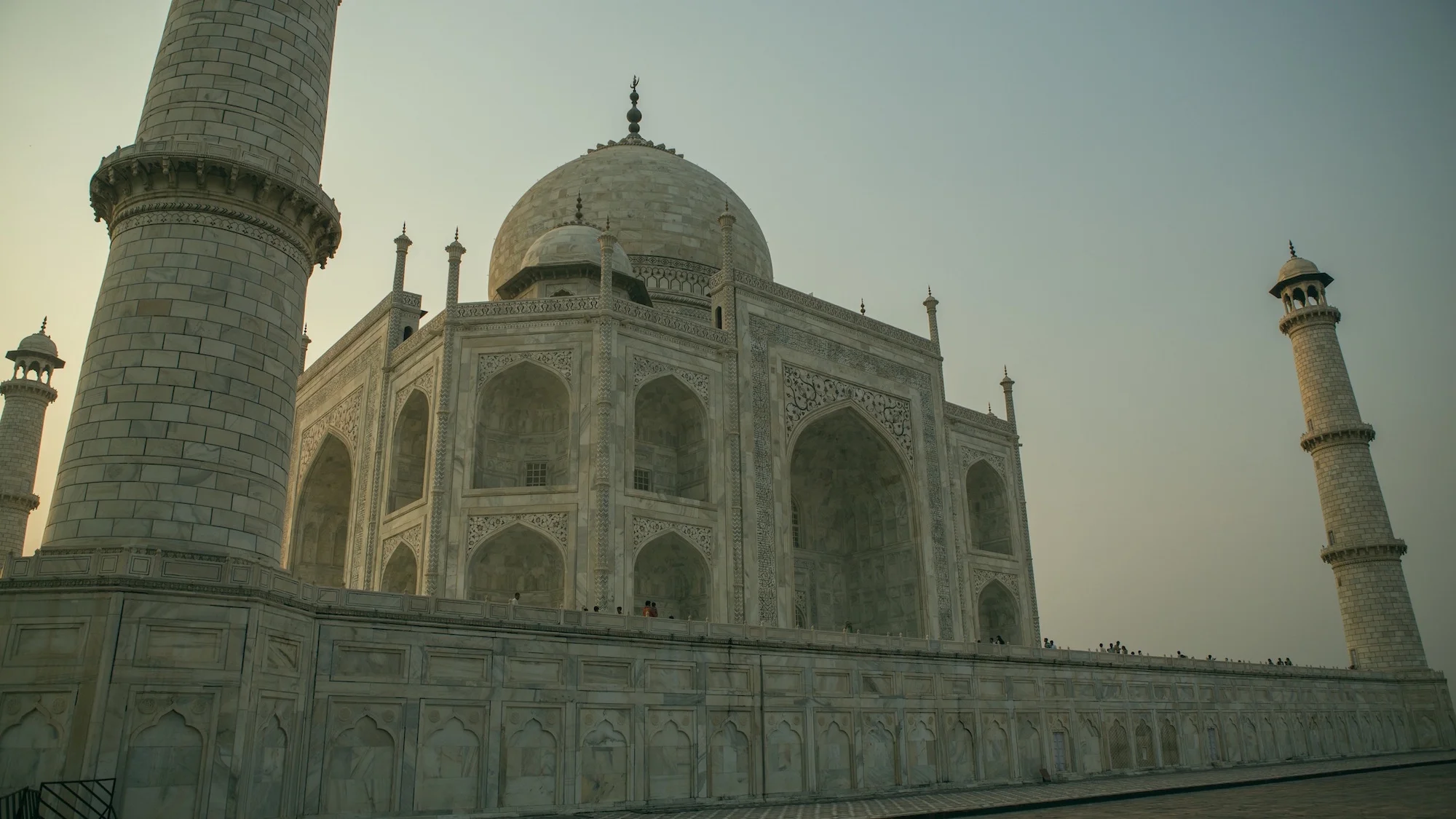The Taj Mahal was built by Emperor Shah Jahan as a mausoleum for his favorite wife, Mumtaz Mahal, who produced for him 14 children in 19 years, including one who eventually put him in prison. The intimation from our tour guide is that the Taj Mahal is a monument to the power of love and dedication. Our impression was that it was more a monument to the power of slave labor, but I see his point.
Peter, the missionary we’re here working with, gave us a little tip on how best to experience the Taj (See? I have given the Taj Mahal a little nickname, to show you how familiar I am with it). The best thing to do is to walk through the gates with your head down, staring at your feet. Once you stand at the edge of the platform opposite, look up and experience it all at once. It seemed to work a treat; I immediately gasped with awe. But then, the Taj is so breathtaking I doubt it needed the help.
The remainder of our time with the monument seemed to mostly be a competition between Mike, Andy, and myself to see who could take the most photographs (I think Mike won, but it was a near thing). My favorite detail, though, was the one thing we weren’t allowed to photograph.
Inside the mausoleum, the walls are made of polished white marble, decorated with vines and flowers made of semi-precious stones, which light up whenever a light is pressed against them. It is extraordinarily beautiful, but it happens in a room that has no lights in it. It seems incredible to me that someone would spend 22 years building a room that responds brilliantly to light without putting any lights in it, but there it is.
But it turns out that the Taj is specifically built to change in each light – pinkish in the morning, milky-white in the evening, and golden when the moon shines. At night, the stones inside the mausoleum shimmer in the moonlight. The stones aren’t wasted inside, they simply have to wait for the right moment.
There’s a metaphor there somewhere.

